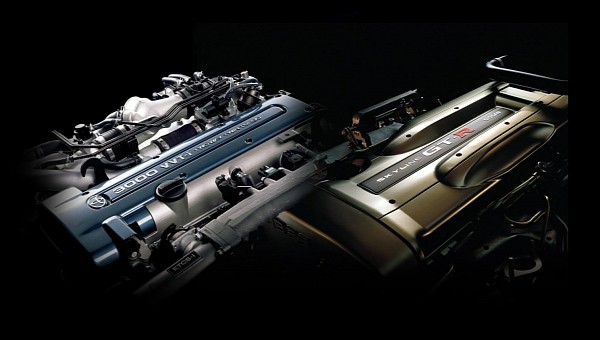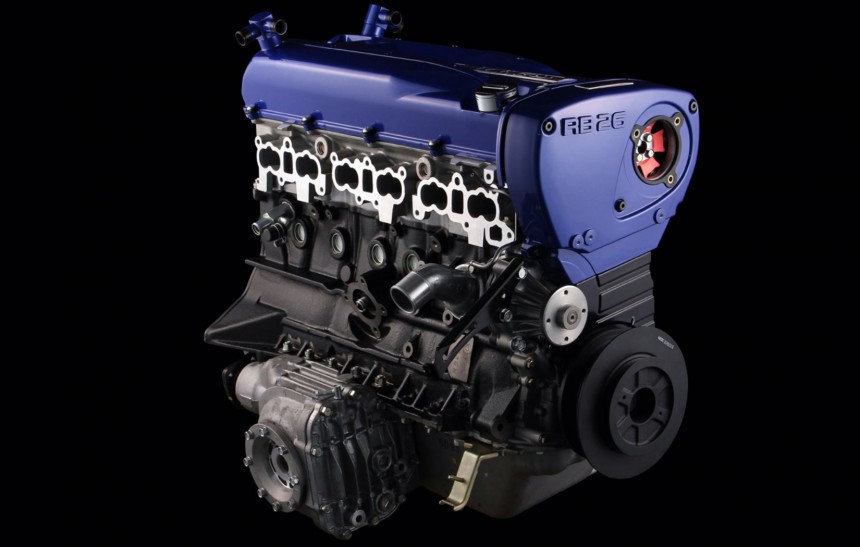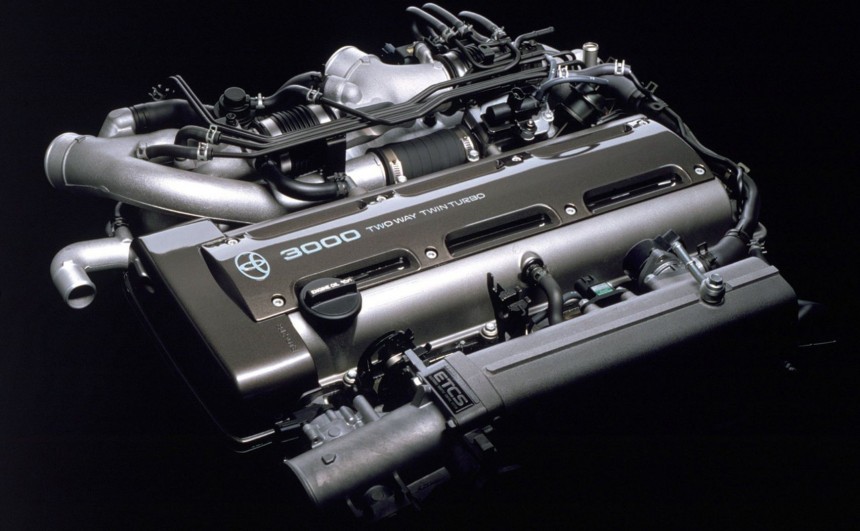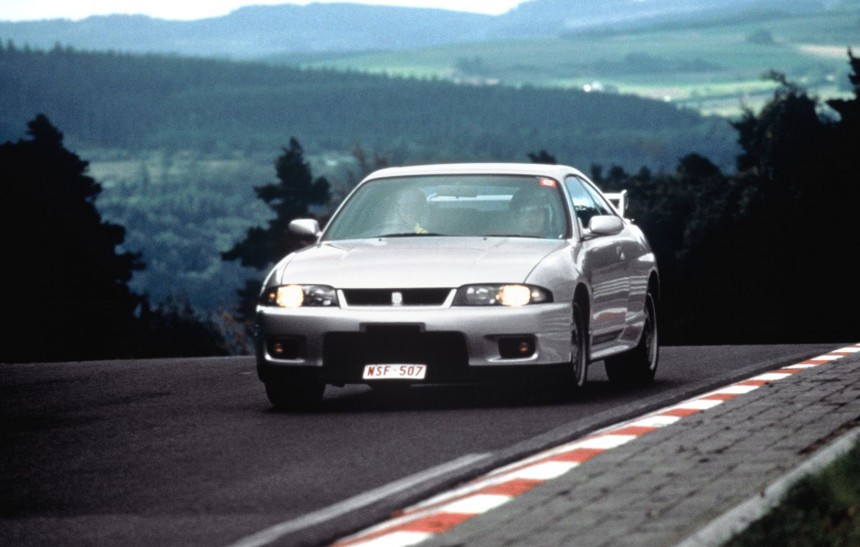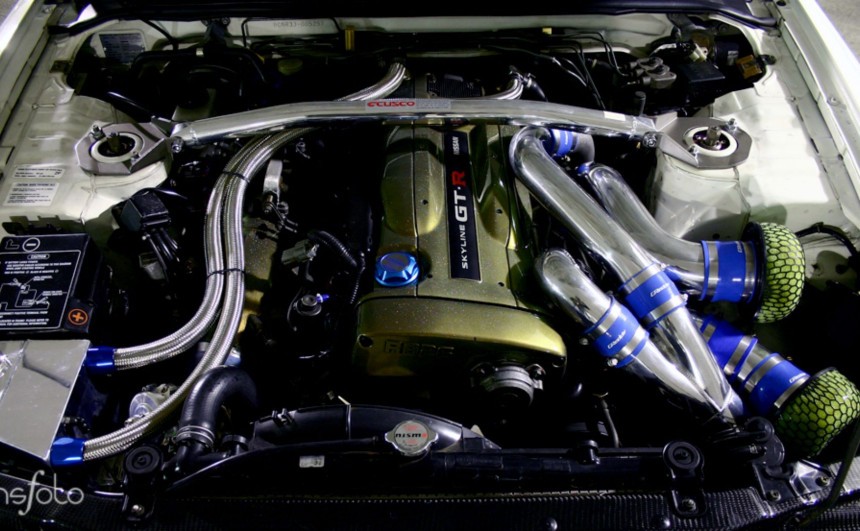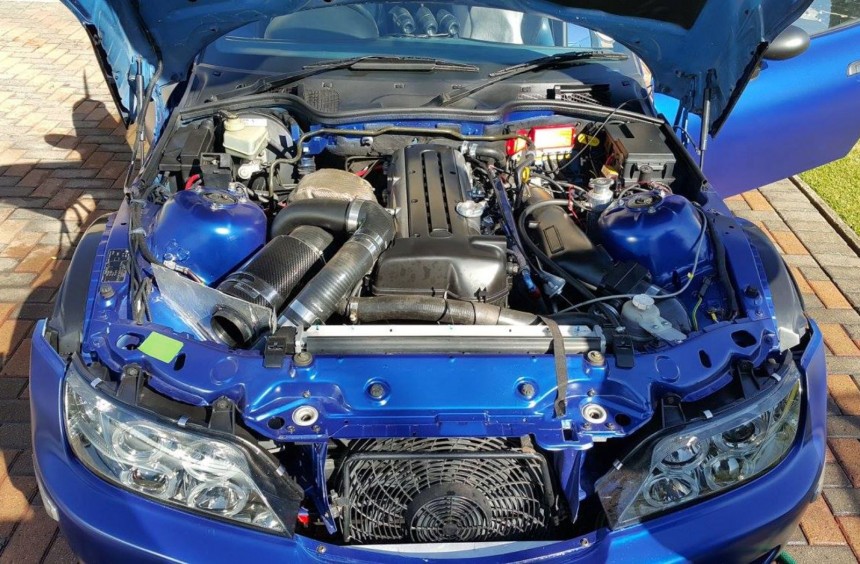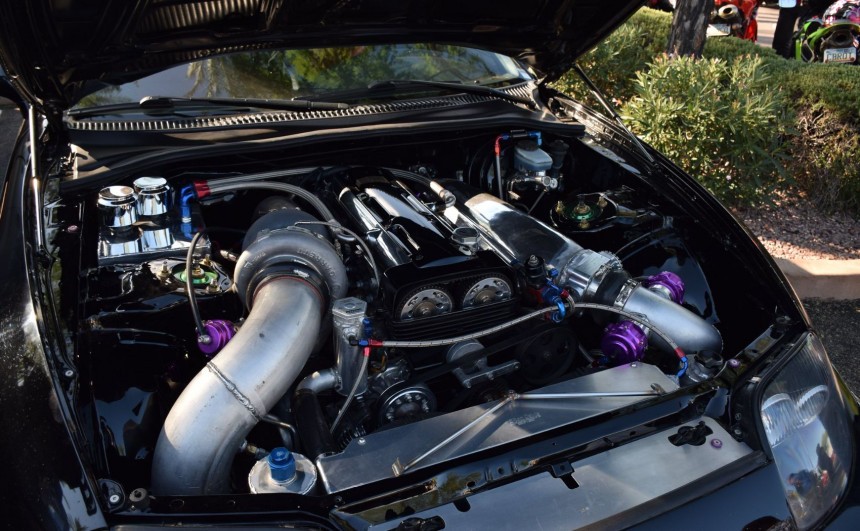The world is moving on from internal combustion engines, but for most gearheads, talking about which electric motor is better is as boring as comparing two washing machines. So, instead of doing that, we’re going to compare two of the greatest, most exciting six-cylinders ever built.
Decades before the industry realized that more money can be made by bringing electric vehicles back into the mainstream and marketing them as an answer for all our environmental issues, the Japanese started to mass-produce some truly astonishing engines.
From Honda’s K20, Mitsubishi’s 4G63, or Mazda’s 13B, some of the best, most innovative ICEs were developed in Japan. But, riding high atop every JDM enthusiast’s list is either Nissan’s RB26DETT or Toyota’s 2JZ-GTE, two of the most epic performance-oriented six-cylinders ever built anywhere in the world.
Both were introduced at the dawn of the 1990s and ended up powering two excellent sports cars. The first to hit the streets was the R32 Nissan Skyline GT-R, but since it was so good, it was carried over to the next two iterations that came out in 1995 (R33) and 1999 (R34).
The second Japanese six-cylinder icon, in its most popular, turbocharged form was initially placed under the engine bay of a luxury sedan called Toyota Aristo (the JDM equivalent of the Lexus GS), but it gained worldwide recognition for powering the A80 Supra RZ (aka Turbo).
Since it was released first, let’s start with the Nissan engine. Part of an extended range of inline sixes dubbed RB, the 26DETT was developed with an eye on various touring car championships, so it has a racing pedigree.
It was built around a cast iron block with the bore and stroke measuring 86.9 mm (3.42 in) x 73.7 mm (2.90 in), making the RB26 an oversquare engine. Inside the block, cast conrods and pistons were used, while on top of it, engineers designed an aluminum head with belt-driven dual-overhead cams (DOHC) and four valves per cylinder.
Displacing 2.6 liters, the engine used individual throttle bodies, an electronic fuel injection system, and twin Garrett T25 turbochargers which were upgraded to ball bearing-type T28s for the R34 generation.
The 2JZ-GTE was the flagship, performance version of Toyota’s JZ engine range developed as a response to the RB26, yet as surprising as it may seem, it was never used for the carmaker's racing endeavors because it was deemed too heavy.
Like its rival, it featured a block made out of cast iron combined with an aluminum DOHC, 24-valve head. However, the block was slightly bigger and noticeably heavier.
At the time, Toyota was establishing itself as a world leader in terms of reliability, so to ensure that the 2JZ was bombproof, the block was overengineered, receiving several reinforcements, as well as forged internals. It was designed as a square engine, with both bore and stroke measuring 86 mm (3.39 inches), while the displacement stood at 3.0 liters.
Notable differences from the RB26 are the lack of individual throttle bodies (a single unit was used) and a sequential turbocharging system that was designed in partnership with Hitachi to improve low-end torque. But probably the most important difference is the 2JZ’s non-interference design which prevents the pistons from hitting the valves if a belt or chain snaps, preventing the risk of catastrophic engine damage.
Before we go over the figures, which are not that impressive, I have to remind everyone about the Japanese automotive industry’s infamous “Gentlemen's Agreement”. To limit serious car crashes, which were worryingly on the raise in Japan during the late 1980s, the country’s automakers formally agreed to limit output and top speed to 276 hp and 180 kph (111 mph) for all domestic market cars.
Because of this agreement, the true potential of these engines was limited on the production line. Thus, on paper, the RB26 made 276 hp at 6,800 rpm and 260 lb-ft (353 Nm) of torque at 4,400 rpm, but those figures rose when the GT-R was dyno tested.
The other Japanese six-cylinder marvel’s rated output was – you guessed it – 276 hp at 5,600 rpm in Japan, but unlike the Skyline GT-Rs, the A80 Supra was also marketed in Europe and North America, where it was rated at 320 hp, which is close to what the JDM version was making on the dyno. Peak torque was 320 lb-ft (434 Nm) at 4,000 rpm, rising to 333 lb-ft (451 Nm) in 1997 thanks to the introduction of Toyota’s variable valve timing (VVT-i) system.
From these figures, we can see that the 2JZ made more torque and delivered it slightly earlier in the rpm range thanks to its square design and sequential turbo setup. However, the RB26 could rev higher, and with its individual throttle bodies, it sounded arguably better.
When the Skyline GT-R and the Supra RZ/Turbo hit the streets, enthusiasts began to realize that more power can be easily extracted from their amazing engines.
With just minor hardware modifications and a good remap of its ECU, the RB26 can be pushed to 400 hp safely. This is a respectable figure for an engine designed in the late 1980s, but it’s by no means the RB’s ceiling. Swapping the stock internals with forged variants and adding more boost from a bigger turbo can increase its output in the 600 to 800 hp range. Further modifications like adding an aftermarket block and head combo can even take it well over the 1,000 hp mark.
When it comes to the 2JZ, things are very different. With its beefy block and forged internals, minor modifications can push it all the way up to 800 hp. Add more aftermarket hardware and it can reach mind-blowing figures that exceed 2,000 hp.
Taking all of this into consideration, the 2JZ undoubtedly has a higher power potential thanks to Toyota’s over-engineering.
As I mentioned earlier, the RB26-powered GT-Rs never made it to North America and just a small number of examples were officially sold outside of Japan, exclusively in right-hand-drive markets.
Not only did Toyota sell the 2JZ-GTE-equipped Supra in more countries, but it also fitted the engine in the Aristo sedan. Furthermore, it also built plenty of naturally-aspirated versions of the motor (2JZ-GE), which shares the same block, crankshaft, and forged conrods with its turbocharged sibling. This version was available on a wide range of Toyota models, which means that a 2JZ is far easier to get than an RB26.
It’s also cheaper, even in the more popular 2JZ-GTE form. If you’re looking to swap one of these engines into something like a BMW (that’s what I would do), you’ll have to pay more for the rarer RB26 and also spend more on parts to get it above a respectable 500 hp.
Determining which of these six-cylinder heavyweights is better can be a difficult task and, ultimately, it comes down to what aspects you take into consideration.
In the YouTube video below, Craig Lieberman, a thoroughbred gearhead who used to own two A80 Supras, as well as an R34 Skyline makes an excellent point. While there’s no denying that the RB26 is an excellent engine, most of the hype surrounding it comes from the fact that it powered three generations of legendary sports cars.
Yes, the A80 Supra was also a legend, but the Skyline GT-R (particularly the R34) was indisputably a better machine, mainly because it was equipped with one of the most innovative 4WD systems of its era, as well as a high-tech active steering system.
In addition, race-spec GT-Rs with purposely-build engines based on the RB26 were very successful for many years, while the 2JZ was never used officially by Toyota in its motorsport programs, as the carmaker preferred to race four-cylinder or V8-powered Supras.
So, if you add motorsport success and the superiority of the chassis to the architecture, reliability, and power potential of each engine, the RB26DETT is better. However, if you are being objective, the 2JZ-GTE is the obvious winner.
From Honda’s K20, Mitsubishi’s 4G63, or Mazda’s 13B, some of the best, most innovative ICEs were developed in Japan. But, riding high atop every JDM enthusiast’s list is either Nissan’s RB26DETT or Toyota’s 2JZ-GTE, two of the most epic performance-oriented six-cylinders ever built anywhere in the world.
Both were introduced at the dawn of the 1990s and ended up powering two excellent sports cars. The first to hit the streets was the R32 Nissan Skyline GT-R, but since it was so good, it was carried over to the next two iterations that came out in 1995 (R33) and 1999 (R34).
The second Japanese six-cylinder icon, in its most popular, turbocharged form was initially placed under the engine bay of a luxury sedan called Toyota Aristo (the JDM equivalent of the Lexus GS), but it gained worldwide recognition for powering the A80 Supra RZ (aka Turbo).
The RB26’s architecture
It was built around a cast iron block with the bore and stroke measuring 86.9 mm (3.42 in) x 73.7 mm (2.90 in), making the RB26 an oversquare engine. Inside the block, cast conrods and pistons were used, while on top of it, engineers designed an aluminum head with belt-driven dual-overhead cams (DOHC) and four valves per cylinder.
Displacing 2.6 liters, the engine used individual throttle bodies, an electronic fuel injection system, and twin Garrett T25 turbochargers which were upgraded to ball bearing-type T28s for the R34 generation.
The 2JZ-GTE’s architecture
Like its rival, it featured a block made out of cast iron combined with an aluminum DOHC, 24-valve head. However, the block was slightly bigger and noticeably heavier.
At the time, Toyota was establishing itself as a world leader in terms of reliability, so to ensure that the 2JZ was bombproof, the block was overengineered, receiving several reinforcements, as well as forged internals. It was designed as a square engine, with both bore and stroke measuring 86 mm (3.39 inches), while the displacement stood at 3.0 liters.
Notable differences from the RB26 are the lack of individual throttle bodies (a single unit was used) and a sequential turbocharging system that was designed in partnership with Hitachi to improve low-end torque. But probably the most important difference is the 2JZ’s non-interference design which prevents the pistons from hitting the valves if a belt or chain snaps, preventing the risk of catastrophic engine damage.
Stock horsepower and torque
Because of this agreement, the true potential of these engines was limited on the production line. Thus, on paper, the RB26 made 276 hp at 6,800 rpm and 260 lb-ft (353 Nm) of torque at 4,400 rpm, but those figures rose when the GT-R was dyno tested.
The other Japanese six-cylinder marvel’s rated output was – you guessed it – 276 hp at 5,600 rpm in Japan, but unlike the Skyline GT-Rs, the A80 Supra was also marketed in Europe and North America, where it was rated at 320 hp, which is close to what the JDM version was making on the dyno. Peak torque was 320 lb-ft (434 Nm) at 4,000 rpm, rising to 333 lb-ft (451 Nm) in 1997 thanks to the introduction of Toyota’s variable valve timing (VVT-i) system.
From these figures, we can see that the 2JZ made more torque and delivered it slightly earlier in the rpm range thanks to its square design and sequential turbo setup. However, the RB26 could rev higher, and with its individual throttle bodies, it sounded arguably better.
Tuning potential
With just minor hardware modifications and a good remap of its ECU, the RB26 can be pushed to 400 hp safely. This is a respectable figure for an engine designed in the late 1980s, but it’s by no means the RB’s ceiling. Swapping the stock internals with forged variants and adding more boost from a bigger turbo can increase its output in the 600 to 800 hp range. Further modifications like adding an aftermarket block and head combo can even take it well over the 1,000 hp mark.
When it comes to the 2JZ, things are very different. With its beefy block and forged internals, minor modifications can push it all the way up to 800 hp. Add more aftermarket hardware and it can reach mind-blowing figures that exceed 2,000 hp.
Taking all of this into consideration, the 2JZ undoubtedly has a higher power potential thanks to Toyota’s over-engineering.
Availability and cost
Not only did Toyota sell the 2JZ-GTE-equipped Supra in more countries, but it also fitted the engine in the Aristo sedan. Furthermore, it also built plenty of naturally-aspirated versions of the motor (2JZ-GE), which shares the same block, crankshaft, and forged conrods with its turbocharged sibling. This version was available on a wide range of Toyota models, which means that a 2JZ is far easier to get than an RB26.
It’s also cheaper, even in the more popular 2JZ-GTE form. If you’re looking to swap one of these engines into something like a BMW (that’s what I would do), you’ll have to pay more for the rarer RB26 and also spend more on parts to get it above a respectable 500 hp.
The Verdict
In the YouTube video below, Craig Lieberman, a thoroughbred gearhead who used to own two A80 Supras, as well as an R34 Skyline makes an excellent point. While there’s no denying that the RB26 is an excellent engine, most of the hype surrounding it comes from the fact that it powered three generations of legendary sports cars.
Yes, the A80 Supra was also a legend, but the Skyline GT-R (particularly the R34) was indisputably a better machine, mainly because it was equipped with one of the most innovative 4WD systems of its era, as well as a high-tech active steering system.
In addition, race-spec GT-Rs with purposely-build engines based on the RB26 were very successful for many years, while the 2JZ was never used officially by Toyota in its motorsport programs, as the carmaker preferred to race four-cylinder or V8-powered Supras.
So, if you add motorsport success and the superiority of the chassis to the architecture, reliability, and power potential of each engine, the RB26DETT is better. However, if you are being objective, the 2JZ-GTE is the obvious winner.
